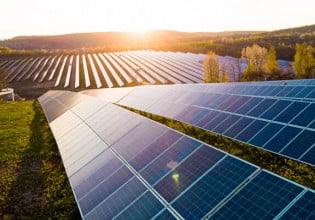A research team led by engineers at the University of California, Berkeley, has developed a new technique to handle metal defects in low-grade silicon, an advance that could dramatically reduce the cost of solar cells. Nearly 90 percent of solar, or photovoltaic (PV), cells in the world are made from a refined, highly purified form of silicon, the same material used to make integrated circuits. The growth of the semiconductor and solar cell industries has put increasing pressure on relatively limited supplies of high-quality silicon, consequently driving up the price of the material.
Attempts to use the far more abundant and cheaper form of silicon -- one that is laden with metal impurities and defects -- have failed because solar cells made from this material do not perform as well. In addition, manufacturing techniques used to remove impurities are expensive, negating the cost benefits of using the cheaper material. The team analyzed how metal contaminants in silicon respond to different types of processing using highly sensitive synchrotron x-ray microprobes capable of detecting metal clusters as small as 30 nm. The researchers found that the nano-sized defects scattered throughout the silicon limited the average distance electrons were able to travel before losing their energy. The longer the distance, known as the minority carrier diffusion length, the greater the energy conversion efficiency of the material. The researchers found that they were able to manipulate the distribution of the metal impurities by varying the cooling rate of the silicon. When the material is cooled quickly, the metal defects are quickly locked in a scattered distribution. By simply slowing down the cooling rate, the metal impurities diffused into large clusters.
"We have proposed a new approach to the use of dirty silicon," said Eicke Weber, UC Berkeley professor of materials science and engineering, principal investigator of the Center for Advanced Materials at the Lawrence Berkeley National Laboratory, and principal investigator of the research project. "Instead of taking the impurities out, we can leave them in, but manipulate them in a way that reduces their detrimental impact on the solar cell efficiency."






